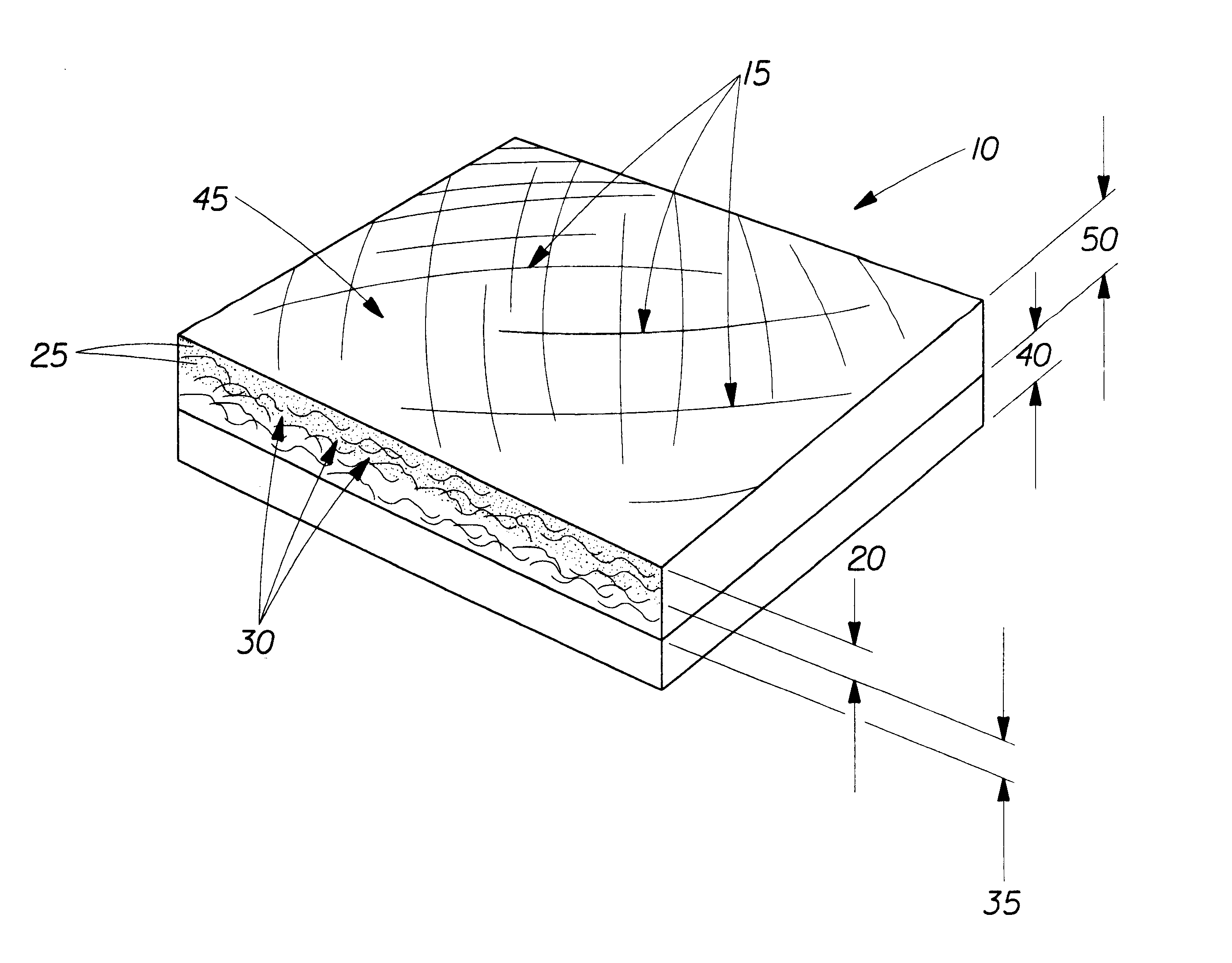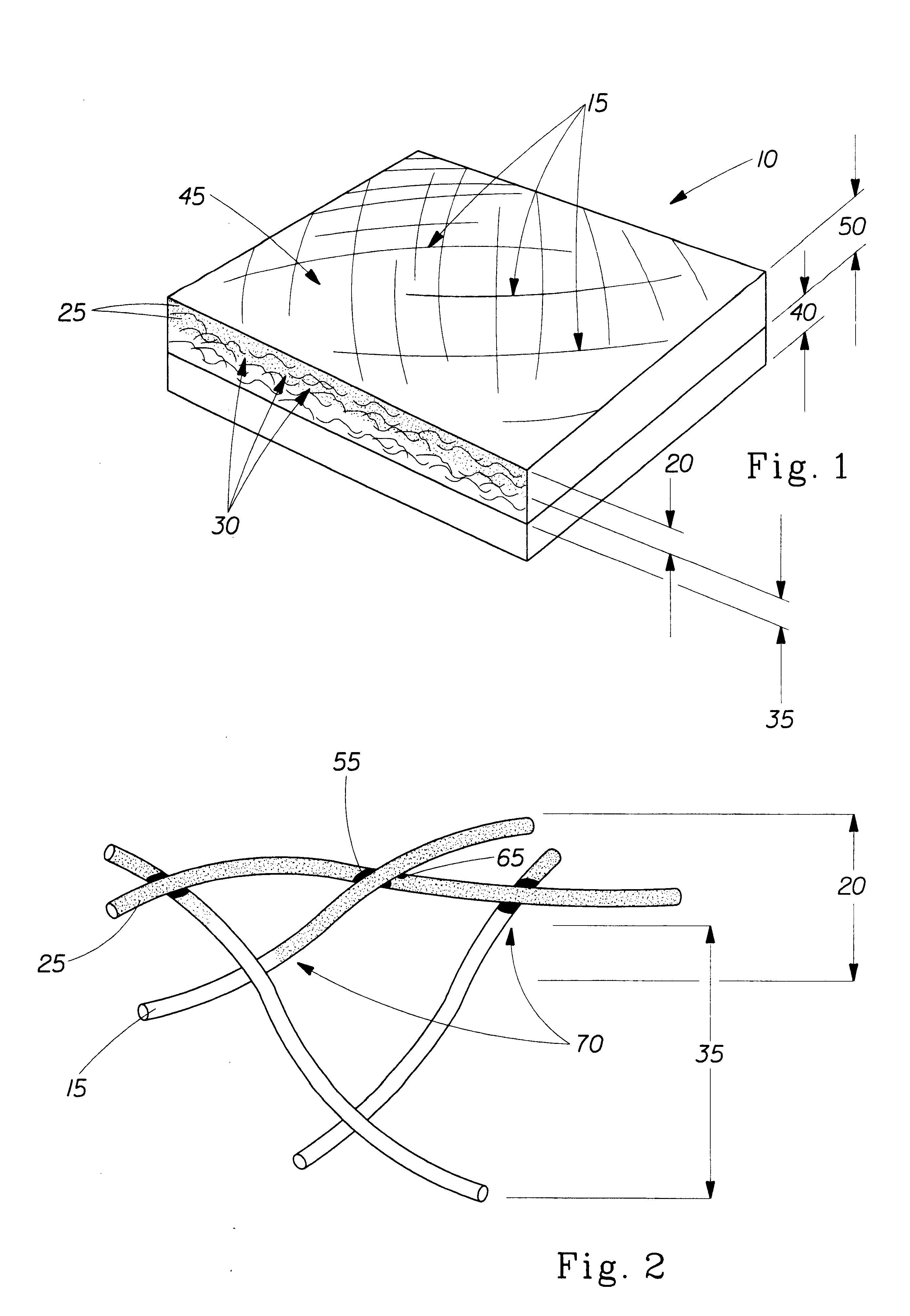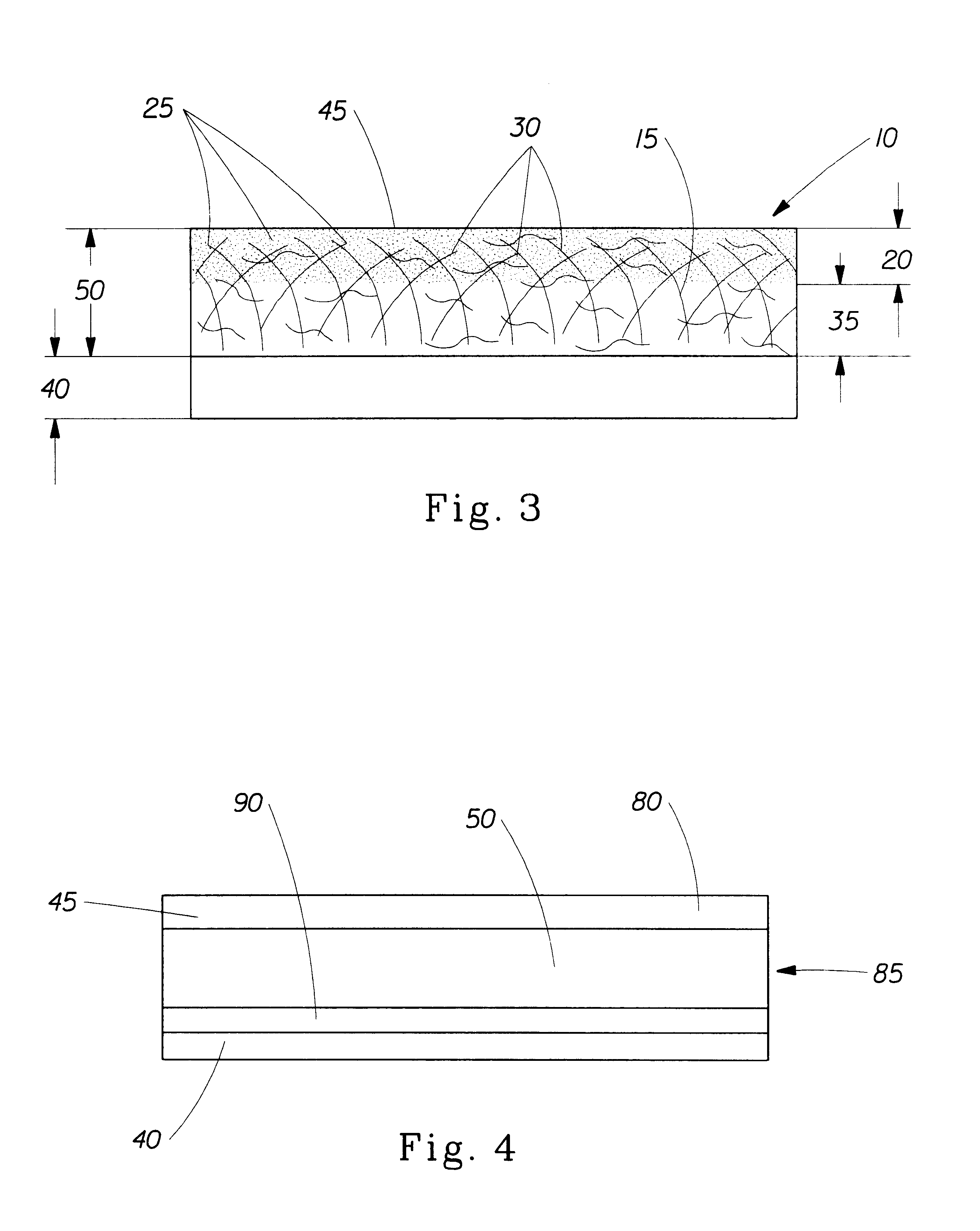Multi-purpose absorbent and shred-resistant sheet material
a sheet material and absorbent technology, applied in the field of multi-purpose absorbent and shred-resistant sheet materials, can solve the problems of not being easily stored, manipulated, disposed, and many protective materials are not absorbent, so as to increase the cut-resistance and shred-resistance, avoid contamination of the countertop during use, and high friction coefficient
- Summary
- Abstract
- Description
- Claims
- Application Information
AI Technical Summary
Benefits of technology
Problems solved by technology
Method used
Image
Examples
example 1
A 40% solids dispersion of Tylac.RTM. 4031 (Reichhold Corporation) with 1% (by Tylac.RTM. solids weight) surfactant added to the dispersion is applied to a 75 / 25 softwood / hardwood blend, 320 lb / 3000 ft.sup.2 paper web. The solution is applied with a #6 Meyer rod. The coated paper web is then passed through a heated, forced-air convection oven to a final web temperature of .about.350.degree. F. (177.degree. C.).
example 2
A 40% solids dispersion of Tylac.RTM. 4031 (Reichhold Corporation) with 1% (by Tylac.RTM. solids weight) surfactant added to the dispersion is applied to a 100% SSK, 280; lb / 3000 ft.sup.2 paper web. The solution is applied with a #6 Meyer rod. The coated paper web is then passed through a heated, forced-air convection oven to a final web temperature of .about.330.degree. F. (166.degree. C.).
example 3
A 40% solids dispersion of Tylac.RTM. 4031 (Reichhold Corporation) with 1% solids (by Tylac.RTM. solids weight) surfactant added to the dispersion is applied to a 75 / 25 softwood / hardwood blend, 320 lb / 3000 ft.sup.2 paper web. The solution is applied with a reverse gravure, 45 tri-helical cylinder. The coated paper web is then passed through a heated, forced-air convection oven to a final web temperature of .about.340.degree. F. (171.degree. C.).
PUM
| Property | Measurement | Unit |
|---|---|---|
| diameter | aaaaa | aaaaa |
| diameter | aaaaa | aaaaa |
| diameter | aaaaa | aaaaa |
Abstract
Description
Claims
Application Information
 Login to View More
Login to View More - R&D
- Intellectual Property
- Life Sciences
- Materials
- Tech Scout
- Unparalleled Data Quality
- Higher Quality Content
- 60% Fewer Hallucinations
Browse by: Latest US Patents, China's latest patents, Technical Efficacy Thesaurus, Application Domain, Technology Topic, Popular Technical Reports.
© 2025 PatSnap. All rights reserved.Legal|Privacy policy|Modern Slavery Act Transparency Statement|Sitemap|About US| Contact US: help@patsnap.com



